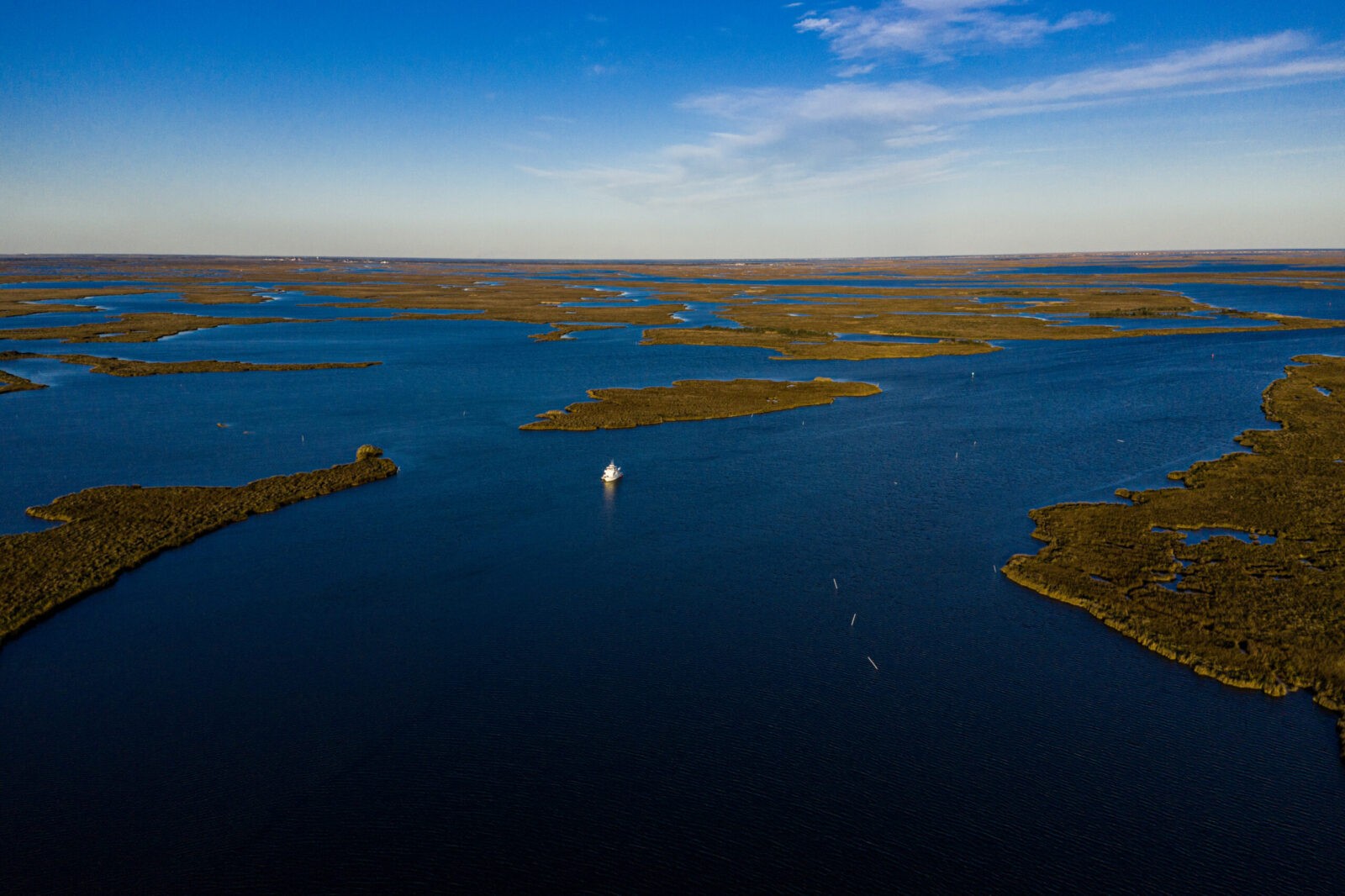
After a three-hour delay due to storms all along the Gulf coast, Zeke Sieglaff and Cameron Davenport from Eleven Experience picked Anthony and me up outside the baggage claim at the newly built New Orleans Airport and we headed south through Cajun country. It had been storming and raining steadily for about seven hours prior to our arrival, and literally, the minute we exited our rental car to offload our gear into the skiffs, the rain stopped. Surely that was a sign of things to come as the weather forecast called for clearing skies and abating winds over the next 24 hours. We cruised via skiff for about thirty minutes before spotting the Outpost liveaboard, anchored in a broad channel amongst the marsh grass. This was our home away from home for the next four days, sharing space in the marsh with the redfish, herons, porpoise, and the oysters. Oysters? Yup. Upon our arrival, the Eleven staff greeted us with a teaser of the cuisine we were about to enjoy for the next four nights. Take a look at these beauties — with fishing pretty much postponed due to our arrival delay, we had nothing to do that first afternoon but settle in, enjoy some great food and drink, and get acquainted with the crew.
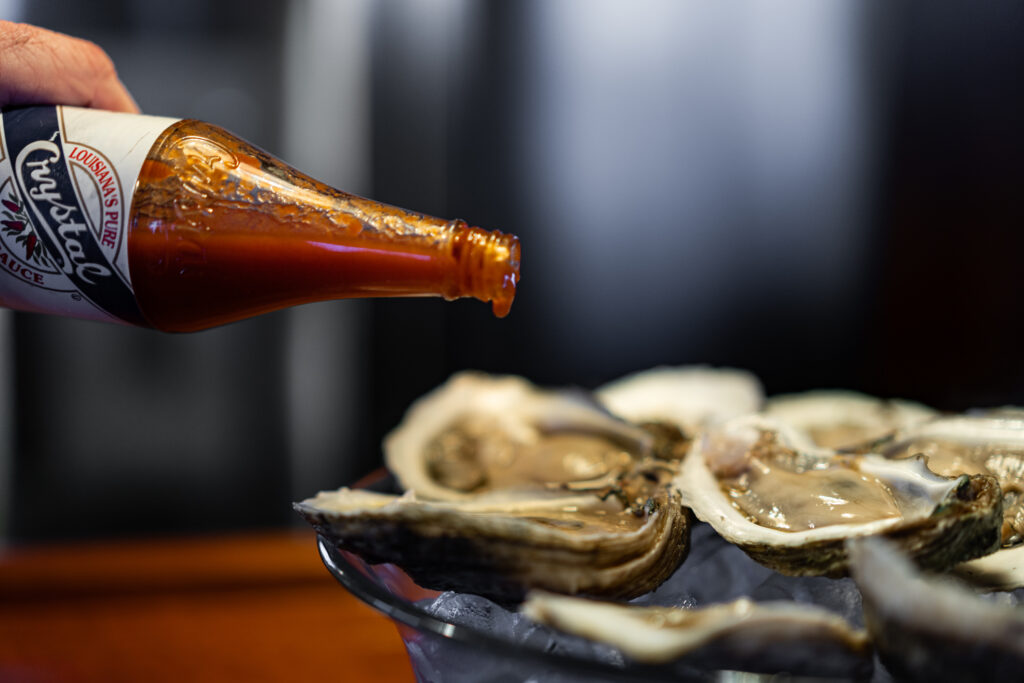
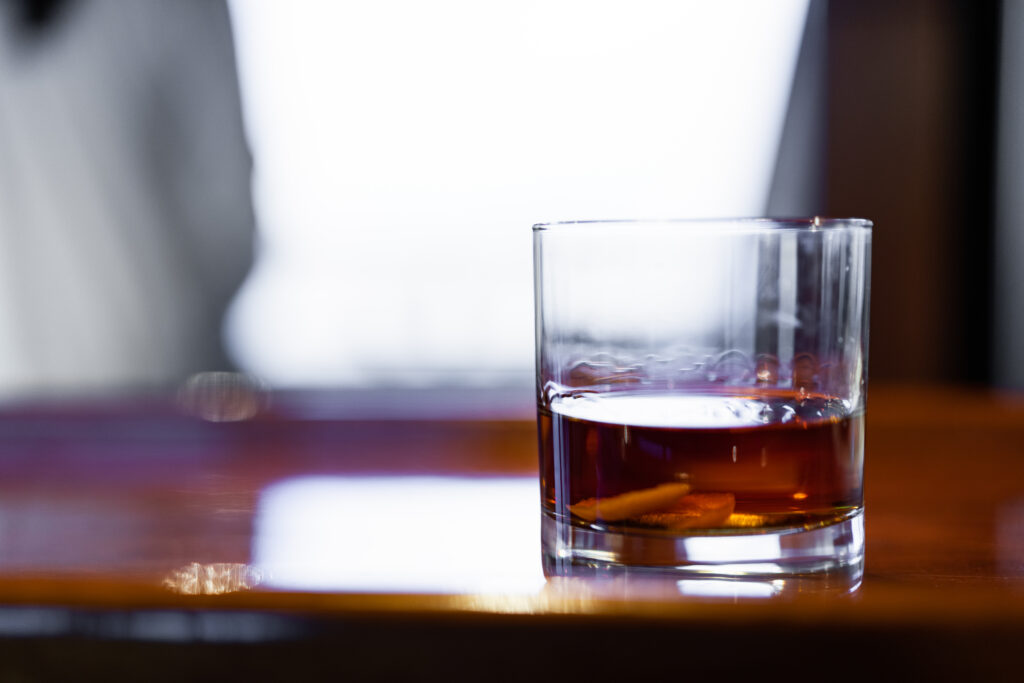
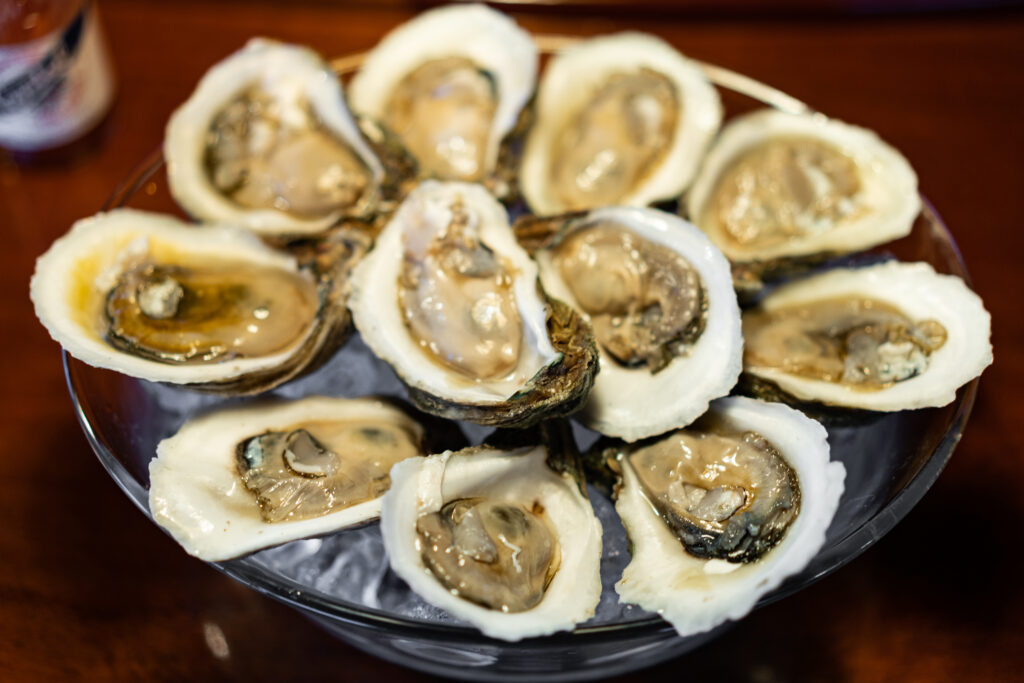
Our first full day greeted us with cool temps in the upper 40’s with skies trying to shake off the low cloud cover with the help of a steady 15-20 mph wind. Fish were tough to spot with heavily stained water and overcast skies, but the flip side of the coin was that by the time you saw them, your cast was always less than 20 feet. When conditions are like this, the fish are lethargic, easing along at a snail’s pace, hoping to bump out a few shrimp or baitfish during their travels. A short, accurate cast is all it takes for these fish to jump on your fly. You either hit them on the head and spook them or drop it about a foot in front of their chin — there’s little hesitation if the fish sees the fly, and they clearly ascribe to the theory that he who hesitates goes hungry. The take from a fish pushing the magic 30-pound mark is nothing short of epic. Taking into consideration that you’re fishing in a foot of water, usually, well inside the 30-foot realm, the take is quite literally explosive and a bit startling in nature. What happens next is dependent on a couple of things. When water temps are in the sixties as they are much of the late fall and winter, you usually don’t see your backing on smaller fish in the 15-20 pound range (that’s right, smaller fish – 15-20 pounds). However, when water temps get up in the 70’s they are different fish altogether, and a fish pushing upwards of 20 pounds will hit Dacron almost every time. I can’t remember our fish count for day one, but I remember coming up with about 80 pounds in total, which is how the autumn days on the marsh are usually measured; pounds rather than the number of fish landed.

Frontiers Travel, Marketing Manager, Anthony Conti
Days two and three were near perfect from a weather standpoint (look at the pics!). Temps in the 70’s with plenty of sunshine; with good weather comes good fishing, sometimes even epic fishing. We were counting fish pounds hovering a hundred plus per day, and if we had cast better, maybe three hundred pounds! If you also included the black drum we caught, closer to two hundred pounds of fish landed on each of the last two days. Most of the redfish averaged around 20 pounds, and the black drum we landed almost all exceeded 25 pounds with a couple pushing 40, and we did see some eclipsing the 50-pound mark. If they had more fight in them, we would have pursued them exclusively, but alas, they are more fun to entice than to fight. That said, it’s tough to beat a photo of you holding a fish that large caught on a fly rod.
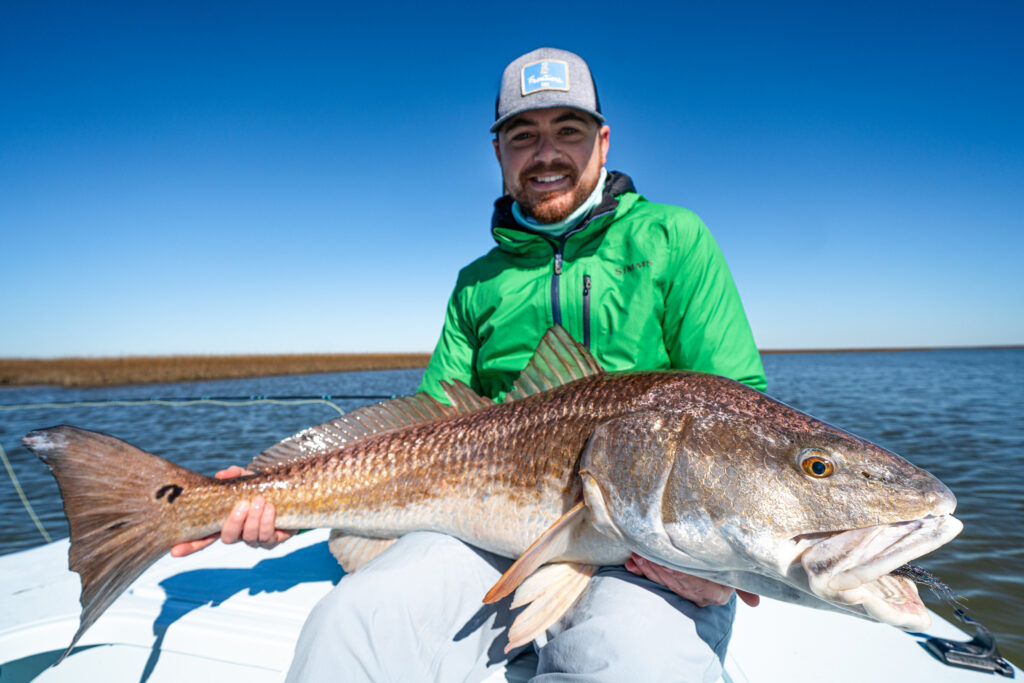
Rather than drone on about every specific facet of the trip, I think it might be best to summarize thoughts into more of a highlighted format, especially since, in narrative form, it is difficult to express so many of the things you need to know when considering a trip like this.
Ease of Getting to the Destination – No passport needed. New Orleans is super easy to access from almost anywhere in the U.S. — a true no-brainer. I’d rate the logistics of this trip as a 9 out of 10. When we do these exploratory trips to see a venue for the first time, we often don’t have additional time to add on extensions to the fishing portion of the trip. And oh what a perfect destination this is for people who can add night or two, either upon arrival or après fishing. New Orleans has tons of great nightlife, music, and a food scene pretty much unrivaled in the U.S. When putting this trip together, please do yourself a favor and let us put an extra day or two on your itinerary to spend in New Orleans.

Degree of Difficulty – I’d rate redfish as a 4 or 5 out of 10. In my mind, a fly fishing trip for redfish in Louisiana is a perfect transition for people who are relative newcomers to sight fishing in saltwater. Unlike bonefish, permit, and tarpon, redfish aren’t as demanding and difficult as some of the flats species out there. You still have to be vigilant to spot them, and you still have to be mindful of your presentation as well as your hookset not being “trouty” in nature. That said, redfish are a forgiving adversary when it comes to presentations, often searching out that “plop” of a presentation rather than bolting from it. They’re also a relatively slow-moving target, which is helpful for those still learning that saltwater targets are not stationary by nature, rather they are constantly on the move while in search of their next meal. With that in mind, casts for redfish are typically made with more time to set up a good casting angle, and finding the proper distance through an additional false cast or two. The environment also helps in getting a fly in front of them. Stained water is a great cover for presentations that are less than perfect, and with their meandering demeanor, you’ll more often than not feel more at ease rather than rushed to make a cast.
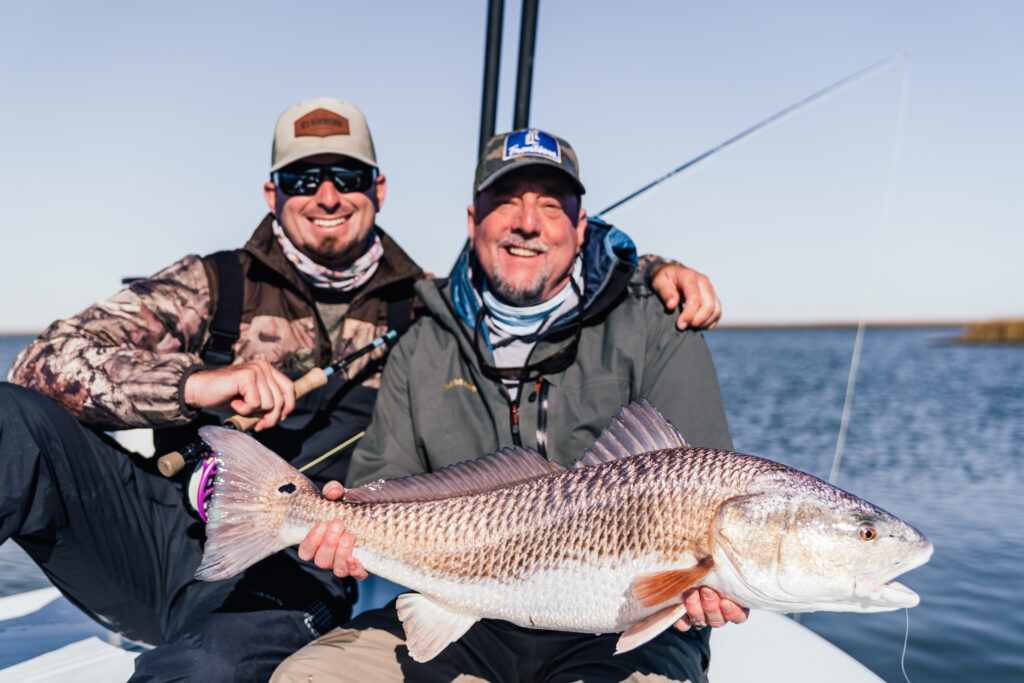
Fishing Pressure – Zip. While I don’t want to give away any specific information on the exact areas we fished, I will say that it is not out of Hopedale, which is easily the most heavily fished area south of the city, and by most standards fishing pressure is minimal even in that region. Alternatively, Eleven uses two anchorages based on the West Bank. They use one anchorage when nice stretches of weather are forecasted. That anchorage quite literally puts you one minute from the fishing, and another anchorage located slightly inland by 30 minutes that offers protection from the winds, and one that provides perfect sleeping conditions for the guests. The beauty of this area is that there is almost zero fishing pressure, a true advantage of a live-aboard operation. In three days of fishing, our two boats saw only one other skiff out fishing. When you look at the images shot from the drone, you realize that there is more fishy water that you have all to yourself than one person could fish in a lifetime.
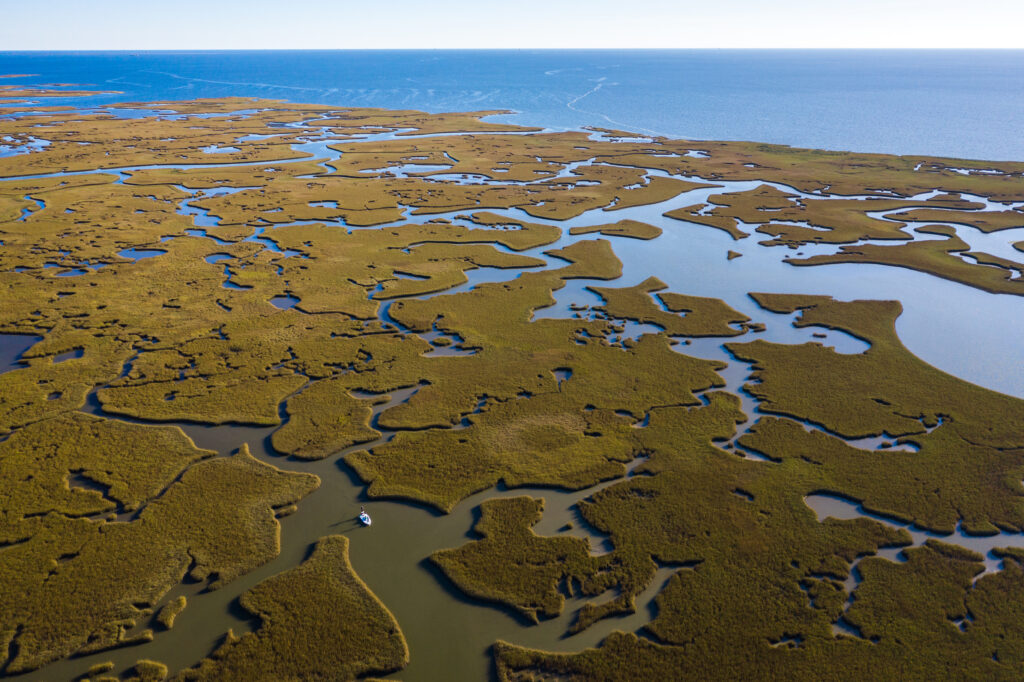
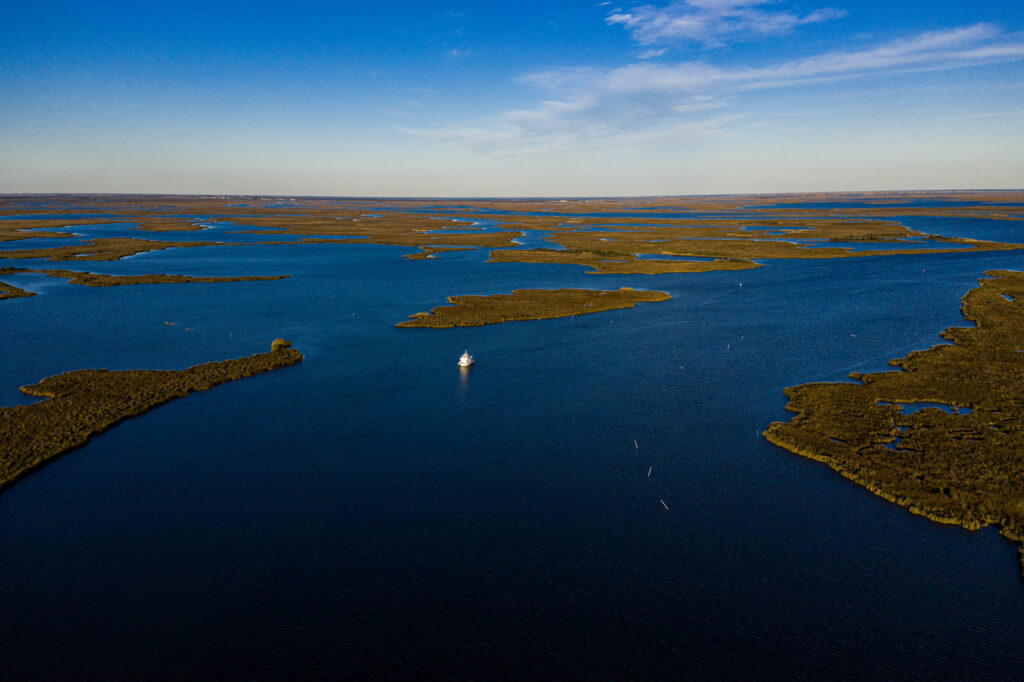
Fishing the March in Fall/Winter – Essentially, you need to know two things; one is that fall and winter is when the biggest redfish flood the marsh, making sight-fishing for giant fish in skinny water a reality. Secondly, its fall/winter, and you’ll need to dress accordingly. Fall/winter fishing just about anywhere means there are an ebb and flow to cold fronts, and arriving prepared for cooler weather is a must. Layers. That’s what will make each day comfortable, no matter what. A long-sleeved high-performance fishing t-shirt with a light fleece over it, a puff jacket, and a rain jacket over that make running in a skiff easy peasy. Bring rain pants too for all-day comfort. I had a wool beanie and a pair of warm socks. With temps ranging from the mid-forties at dawn to low seventies in the afternoon, layers of clothing made it all comfortable. You can bring your fishing gear if you want, but I’ve never been on an Eleven trip where the best of gear wasn’t available in spades.
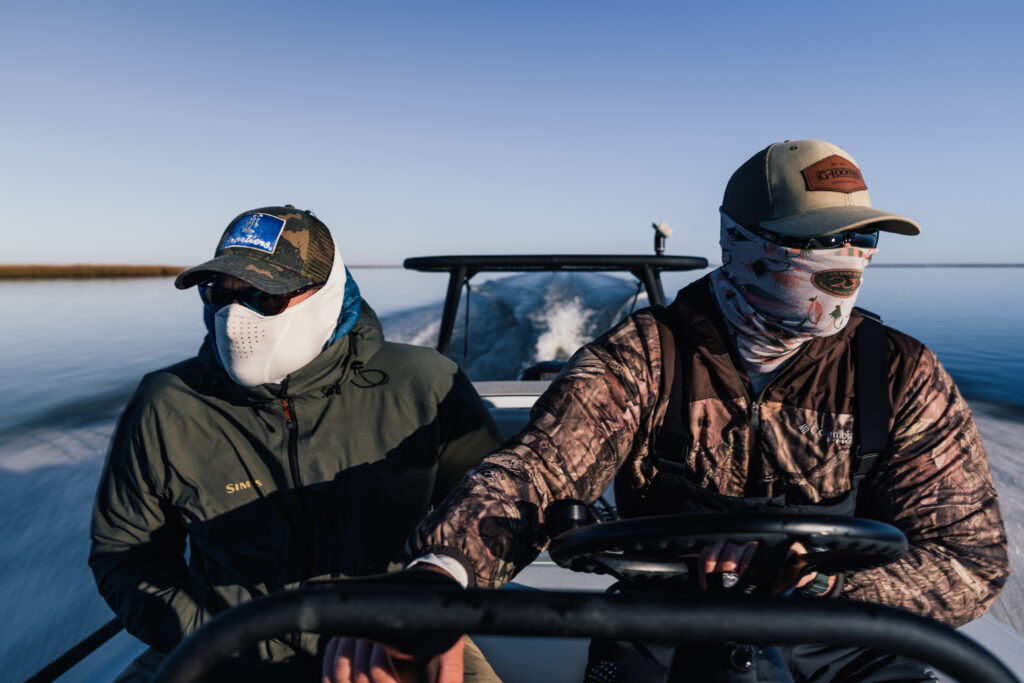
2020 Trips on the Outpost in Louisiana – Don’t wait. As I write this, there is very very limited space for the fall/winter 2020 season. If you have a group of four and want to do this trip, please call me right away, and I’ll see what is available for dates for the coming season or book you for 2021. Trips are typically four-nights and four days with half-day fishing on arrival followed by three full days of fishing, and a half-day on departure. You’ll need to pack nothing but fishing apparel for a trip aboard the Outpost; Eleven provides everything from a gear standpoint.
In Summary – Beyond comfortable accommodations, incredible food prepared by your own private chef, remote fishing in an incredible resource, superior guides, and crew, and very easy to get to. A trip on Eleven’s Outpost is a must for a small group departure.
Please call me if you have any questions about this or any of the other Eleven live-aboard operations.



